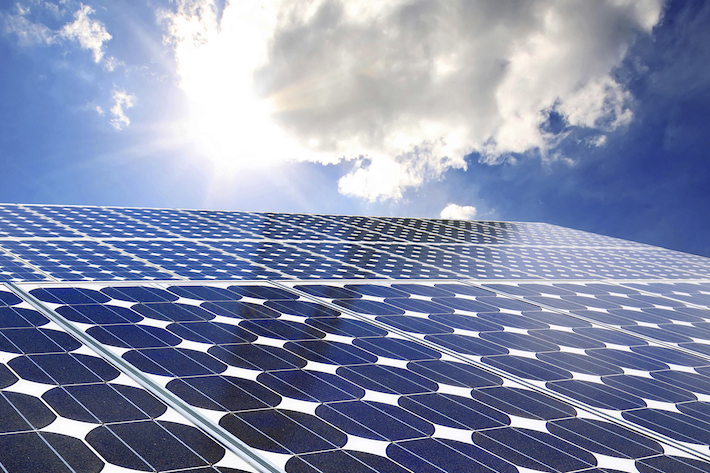
San Diego Gas & Electric says more than 25,000 of its customers use rooftop solar panel systems to meet at least part of their electricity needs. Are you thinking of joining them?
In a previous post, we answered some of the most frequently asked questions about the affordability of solar panel installation. Here, we tackle additional questions to help you determine if going solar is right for you.
How Long Until Solar Panels Pay for Themselves?If I Purchase a Solar Panel System for My Home or Business, Can I Expect a Return on My Investment?
Yes! Studies show solar panels return, on average, two to four times their cost in savings on electricity bills. Solar panels typically pay for themselves within five to seven years of installation. That makes solar panels a significantly better investment than many traditional investment products, including stocks, bonds, and CDs. Plus, solar panel systems last for more than 25 years.
How Much Can I Save on My Electricity Bills with Solar Panels?
It depends on several factors, including the amount of electricity you use, the efficiency of your appliances, whether you purchase or lease your solar panel system, and how much energy you’d prefer to generate yourself (instead of, or in addition to, your utility company). San Diego residential and commercial solar users can elect to declare their complete independence from SDG&E by producing 100% of their electricity, or they can choose to generate a percentage of their own electricity and let the utility provide the rest.
In sunny San Diego, you can expect to produce an excess of solar power — especially in summer when the days are longer — and receive credit from SDG&E for extra power that you deliver to the electric grid. The billing mechanism for solar energy’s give-and-take process, or using some electricity from the grid and giving some back, is known as net metering. When you give excess electricity generated by solar panels back to the utility company, the company provides a monthly credit. Think of it as your meter running in reverse. Learn more about net metering and changes for San Diego residents.
Clean Technica, a website focusing on clean tech news and analysis, reports that a typical San Diegan who purchases a solar panel system could save nearly $27,000 over the course of 20 years. Even with financing options, San Diego solar panel users could save about $20,000 (at 5% interest) over 20 years.
Homeowners can get a customized estimate of their solar savings here, and businesses can request a site assessment here.
Will Installing Solar Panels Affect my Home’s Value?
Yes again and in the best way! Based on an average-sized system, solar panels add approximately $15,000 to a home’s value, according to a 2015 study by Lawrence Berkeley National Laboratory. The study found many homebuyers are willing to pay for homes with solar panel systems.
Are Financing Options Available?
You can take advantage of one of three options to pay for your rooftop solar panel system: cash purchase, financing, or leasing. Each method has its own pluses and minuses; but generally speaking, paying cash offers the lowest cost per kilowatt hour and the best return on your investment. Upfront costs aren’t easy for many homeowners, which makes financing a commonly selected option. When you lease a new solar panel system, you will not be eligible for federal tax incentives that make solar panel purchases more affordable.
Learn more about the pros and cons of payment methods for solar panels in San Diego here.
Is Maintenance of Solar Panel Systems Costly?
Contrary to popular beliefs about the need to change “bulbs,” today’s solar panels contain no moving or replaceable parts. They’re virtually maintenance-free throughout their long lifespan — other than an occasional hosing with water once or twice a year in areas like San Diego where rain is sparse. A good tip: Remove large debris if it accumulates on solar panels to help maintain their efficiency.
Monitoring systems, which are usually part of a solar panel purchase, help check your system’s power generation in real time. Some monitoring systems are available as apps for on-the-go checks of power levels and efficiency.
Do I Need Special Insurance for a Solar Panel System?
Most homeowner insurance policies cover rooftop solar panels. Check with your insurance agent for details.
How do Solar Panels Actually Work?
The most common solar technology relies on photovoltaics, a natural process that converts energy generated by the sun into common current electricity. Typical solar panel arrays are positioned on rooftops to take full advantage of the photovoltaics of sunlight.
Solar panels that use solar photovoltaic, or PV, technology link many PV cells together into modules that are, in turn, packed together into individual panels. PV cells typically include layers of silicon-based semiconductor wafers, and it’s within these wafers that the real magic of solar energy happens. Semiconductors are materials with naturally occurring electrical characteristics. When they’re exposed to the photons in sunlight (the elementary particles of light), they create an electrical charge in what’s called the “photovoltaic effect.” The PV effect moves energy from one side of a solar cell to another, creating an electrical current.
Direct current from PV cells (known as DC) is transferred to an inverter, which then transforms the energy into the alternating current (or AC) that home appliances and other electricity-dependent things use.
Solar panels installations include smart monitoring devices that allow homeowners and businesses to track the efficiency and performance of their systems in real time.
What Happens to my Source of Power at Night or When It’s Cloudy or Raining?
Battery storage of excess solar power created during sunlit hours isn’t yet available to either residential or commercial solar panel users. In San Diego, as in other communities, solar panel systems are tied to the conventional electric grid. Most solar-powered homes and businesses rely on the grid for some of their electricity needs, particularly when the sun isn’t shining or extra power is needed. An uninterrupted process exchanges electricity between a utility like SDG&E and a home or business with solar power so that appliances never miss a pulse of power. Your lights won’t dim, your air conditioner won’t shudder, and your refrigerator won’t blink if the sun sets or a cloud passes overhead.
What Will Solar Panels Look Like on my Home?
Solar panels are no longer the eyesore they were once thought to be; they’ve actually gotten pretty slick-looking. The aesthetics of your home are important, and the best solar companies will take your home’s style into account when designing a custom system for your rooftop. Choosing an installer can be an intimidating process. Baker Electric Solars free downloadable ebook, “The Buyer’s Guide to Going Solar,” includes step-by-step details to help you.




